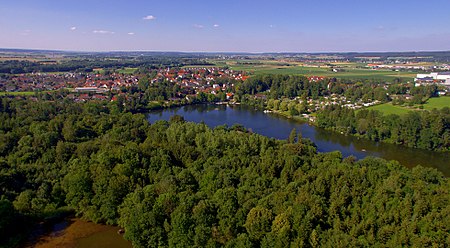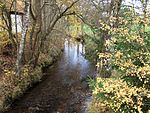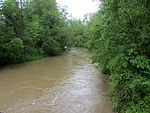Memmingen (German: [ˈmɛmɪŋən] ; Swabian: Memmenge) is a town in Swabia, Bavaria, Germany. It is the economic, educational and administrative centre of the Danube-Iller region. To the west the town is flanked by the Iller, the river that marks the Baden-Württemberg border. To the north, east and south the town is surrounded by the district of Unterallgäu (Lower Allgäu).
With about 42,000 inhabitants, Memmingen is the 5th biggest town in the administrative region of Swabia. The origins of the town go back to the Roman Empire. The old town, with its many courtyards, castles and patricians' houses, palaces and fortifications is one of the best preserved in southern Germany. With good transport links by road, rail and air, it is the transport hub for Upper Swabia and Central Swabia, and the Allgäu.
Due to its proximity to the Allgäu region, Memmingen is often called the Gateway to the Allgäu (Tor zum Allgäu). The town motto is Memmingen – Stadt mit Perspektiven ("Memmingen – a town with perspectives"). In recent times it has been frequently referred to as Memmingen – Stadt der Menschenrechte (Memmingen – the town of human rights). This alludes to the Twelve Articles, considered to be the first written set of human rights in Europe, which were penned in Memmingen in 1525. Every four years there is the Wallensteinfestspiel, with about 4,500 participants, the biggest historical reenactment in Europe. It commemorates the invasion of Wallenstein and his troops in 1630.









